
Nicole Kurtz is our January 2017 Featured Artist
She is featured in the 2017 Mixed Roots Stories calendar.
In this interview, she shared with us her story, about the piece, and her current projects.
Visit Nicole’s website HERE to follow her work!

Nicole Kurtz is our January 2017 Featured Artist
She is featured in the 2017 Mixed Roots Stories calendar.
In this interview, she shared with us her story, about the piece, and her current projects.
Visit Nicole’s website HERE to follow her work!
Mixed Roots Stories Performance Sampler 2017
February 26th, 2:30 – 4:00 p.m.
At the 4th Critical Mixed Race Studies conference, four dynamic performers will share a sampling of their work followed by an open discussion with the artists on craft, process and engaging with themes of the mixed experience.
Elizabeth Chin and the Laboratory of Speculative Ethnology
The Jefferson-Hemings Complex
Elizabeth Chin is an ethnographer and anthropologist with a multifaceted practice that includes performative scholarship, collaborative research, and experimental writing. A professor at Art Center College of Design in the MFA program Media Design Practices/Field, she has published widely on children, consumption, anthropological practice. She has performed and done ethnography in the United States, Haiti, Uganda, and Cuba.
Gregory Diggs-Yang
Becoming Korean, While Growing Out My Afro: A Personal Narrative about a Moment in My Own Identity Development as a Mixed Korean and Black American
Gregory (Chan-wook) Diggs-Yang has a Bachelor’s (BA) in Education from Illinois State University and a Master’s (M.Ed.) in Educational Administration from UCLA. Greg has most recently moved from South Korea where he worked at Seoul National Universities as the Curriculum Coordinator for the IETTP (Teacher Training) and was a co-host of the Arirang Radio segment, ”Footprints of Korea with Chan-wook”. In addition he served as the President of the M.A.C.K. Foundation (Movement of the Advancement of Cultural-diversity of Koreans). A grassroots organization that supports multicultural schools and increases recognition and awareness of the diversity of Koreans. His areas of interest include multicultural education, mixed-heritage, and social justice. Greg is currently a doctoral candidate in the College of Education, Multicultural Education program at the University of Washington, Seattle. His dissertation looks at the support of biracial identity development through educational spaces.
Genevieve Erin O’Brien
Sugar Rebels
Genevieve Erin O’Brien is a Queer mixed race Vietnamese/Irish/German/
For additional conference programing and other details visit the CMRS website.
Mixed Roots Stories LIVE Performance 2017
February 25th, 6:00 – 7:30 p.m.
Mixed Roots Stories will open the 4th Critical Mixed Race Studies conference with live performances by the following:
 Robert Farid Karimi
Robert Farid Karimi
Disco Jesus – new work TBA!
Robert Farid Karimi is a community engagement specialist and comedic storyteller. He works with everyday people in cities, companies, and health centers worldwide on making healthy messaging delicious using comedy, culture and food with his culinary cultural engagement project: ThePeoplesCook Project. And, he speaks on issues as mixed race/consciousness, food politics, community deliciousness and the power of the Fool/Trickster to change the world. www.KaRRRimi.com
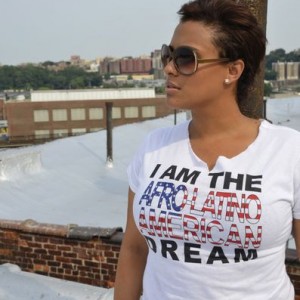 Crystal Shaniece Roman
Crystal Shaniece Roman
Black Latina the Play
In 2008 Ms. Roman launched The Black Latina Movement, LLC (BLM) and began performing BLM’s first written theatrical piece: a one woman show about the lives of dark-skinned Latinas and African American Latinas entitled Black Latina. In early 2013 Black Latina received a new format featuring an all female ensemble cast starring Judy Torres; during the fall the revamped Black Latina saw the success of multiple sold out shows. Since 2013 Black Latina the Play has been on tour in the Northeast at campuses such as: Hamilton College, Penn State University, Community College of Baltimore County-Essex and Lehigh University. Most recently Crystal revised the one woman version of Black Latina the Play after being invited to perform at the Smithsonian Institute for Hispanic Heritage Month Festival Latinidad- Looking into Latina Women’s American Experiences September 2016.
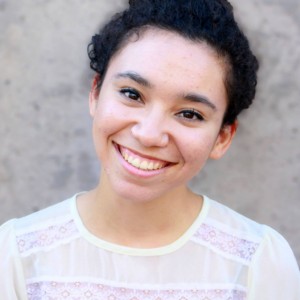 Carly Bates
Carly Bates
Musings of Rachel Dolezal
Carly Bates is an emerging artist from Phoenix, Arizona. With a background in music and piano performance, she is active in the Arizona arts community as a creative collaborator with musicians, movers, poets, actors: storytellers. Having recently graduated from Arizona State University, Carly is currently working with a local playback theatre company called Essential Theater and is also the editor for the Mixed Roots Stories Commons.
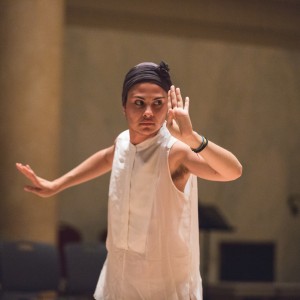 Zavé Gayatri Martohardjono
Zavé Gayatri Martohardjono
Untitled (Balinese dance study)
Zavé Gayatri Martohardjono makes intercultural, geopolitical, boundary-defying, high glam performance, video, and installations. Interested in embodied risk-taking and cross-cultural imagery, they combine improvisation with their own cultural roots: Indonesian mythology and dance, queer iconography. Brooklyn based, Zavé has shown at Aljira Center for Contemporary Art, Boston Center for the Arts, Center for Performance Research, Center for Contemporary Arts in Glasgow, Leonard & Bina Ellen Art Gallery, Movement Research at Judson Church, Recess, SOMArts, Winslow Garage, among others. They have been an artist in residence at the Shandaken Project at Storm King, La MaMa Experimental Theatre, Chez Bushwick, and an Lambda Literary Emerging Writers Workshop Fellow.
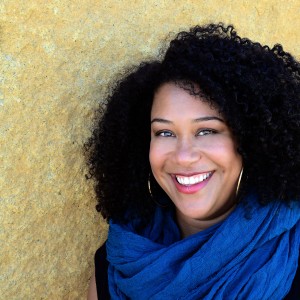 Lisa Marie Rollins
Lisa Marie Rollins
Performing an excerpt from SIDE CHICK: This ain’t no Harlequin Romance
Lisa Marie Rollins is playwright, poet, freelance director and dramaturg. Most recently she co-directed Young Jean Lee’s The Shipment (Crowded Fire Theater) and a reading of Tearrance Chisholm’s Br’er Cotton (Playwrights Foundation). She is the director of All Atheists are Muslimby Zahra Noorbakhsh and was co-producer of W. Kamau Bell’s “Ending Racism in About and Hour”. Lisa Marie performed her acclaimed solo play, Ungrateful Daughter: One Black Girl’s Story of Being Adopted by a White Family…That Aren’t Celebrities in festivals, universities and academic conferences across the US. She was Poet in Residence at June Jordan’s Poetry for the People at U.C. Berkeley, a CALLALOO Journal London Writing Workshop Fellow and an alumni in Poetry of VONA Writing Workshop. Her writing is published in Other Tongues: Mixed-Race Women Speak Out, River, Blood, Corn Literary Journal, Line/Break, As/Us Literary Journal,The Pacific Review and others. Currently, she is finishing her new manuscript of poems, Compass for which she received the 2016 Mary Tanenbaum Literary Award from SF Foundation. She is in development with her new play, Token. She holds degrees from The Claremont Graduate University and UC Berkeley. She is a Lecturer at St Mary’s College in Performance Studies, and a Resident Artist with Crowded Fire Theater in San Francisco. Lisa Marie is a 2015-16 playwright member of Just Theater Play Lab and Artist-in-Residence at BRAVA Theater for Women in San Francisco.
 Fred Sasaki EAT TO JAPANESE: Achieving ethnic authenticity by eating, shopping, emojis
Fred Sasaki EAT TO JAPANESE: Achieving ethnic authenticity by eating, shopping, emojis
A step-by-step guide to being genuine authentic
Fred Sasaki is the art director for Poetry magazine and a gallery curator for the Poetry Foundation. He is the author of Real Life Emails (Tiny Hardcore Press, 2017) and the zine series Fred Sasaki’s and Fred Sasaki’s Four-Pager Guide To: How to Fix You.
The Performance will be held at the Norris Cinema Theater 850 W 34th St, Los Angeles, CA 90089
This event is Co-Sponsored by the USC School of Cinematic Arts
Free tickets will be limited. Check back for a link to register.
For additional conference programing and other details visit the CMRS website.
Day of walk-ins will also be welcome pending ticket availability.

Sharon H. Chang’s inaugural book, Raising Mixed Race: Multiracial Asian Children in a Post Racial World, lays out a blue print that outlines the history of white supremacy and how it has corrupted the way people treat each other, specifically Mixed Race/ Multiracial and Multiracial Asian individuals. She develops an important foundation that provides a glimmer of hope for moving forward toward improving our future world, despite the powerful suppressive system before us.
The title might make you think it is a parenting book, and it is (or could be), but it so much more! The language/verbiage used in the book makes this potentially academic/research strong book accessible for those who might have the most questions…parents. Though this book has a focus on multiracial Asian children, it is not just a book for parents of multiracial Asian children. It is a book for all children of color…and even for parents of white children! This book is for anyone who comes in contact with children in any way. This means if you are a teacher/educator, a child care worker, do research with children or on race and intersectionaility…or if you are a parent, sibling, aunt, uncle, grandparent, or once was a child. This book is for everyone!
The book is based on Chang’s interviews with 68 parents of 75 young children living in Washington State. She does not go into detail about her recruitment and method, however she does discuss this in my recent interview with her (see Part 1 of 2 below). She intertwines her findings with current and historical events, existing scholarly research and reports, her expertise in tracking dialogue across social media, her own multiracial Asian experience and more.
The focus is on children from 0 to 5 years old. This is an age that has been neglected in most parenting books and research with a multiracial focus. This is also an age during which many parents think that their children do not recognize/see race; however Chang shows us that they absolutely do. Young children are learning from the subtle and often unspoken systematic racism that is infused throughout every aspect of our society.
Chang makes it clear that the understanding of race begins in the home. In a world that is fearful to discuss how white supremacy has been engrained into society and families generation after generation…it is time families start having these difficult conversations. Chang warns that race is not easy to discuss, but essential and does not have to be done alone. It can be done through community. Her last chapter provides specific examples of how to address race in the community, school, and home.
This is the first book that I have seen, that looks at racial identity development, and puts systematic racism and white supremacy where it belongs…. at the beginning and linked over and over again to the end. To understand and address race issues with our children, we must begin with its origin story. When attempting to comprehend the lens in which race issues are created, we must understand the frame in which that lens is held together – white supremacy. Chang tells it like it is. She lifts the curtain on age-old white ideas of race, breaks down history, language and concepts that have created divisions between people who look different or do not follow the prescribed norms. For example, she breaks down how the trending term microagression was created from a white lens and points out there is nothing small or mirco about them! She deconstructs terms used in medical spaces, such as “Mongolian Spots” that have racist origins; and many individuals have just come to believe that is what they are called (See Part 2 of 2 below for more on this). Additionally, she provides a fantastic response to the common question/idea “But aren’t we all mixed?” in one of the most eloquently written explanations I have seen. Watch Part 2 of 2 below to hear about how she responds to the question and her new elevator response to this question!
The book is coming out just in time for the holidays, and will make a great gift. It should be on everyone’s 2016 reading list! You can order the book on the publisher site or on Amazon.
Be sure to join Sharon on December 11th for her Facebook launch party. She will be partying all day and giving away some great prizes. Don’t miss it!
You can find the Multiracial Asian Families community and blog page on Facebook, the book page on Facebook. You can fin her on Twitter @mutliasianfams, Pinterest, or on her blog MultiAsian Families.
Watch my recent interview with Sharon!
Part 1 – She shares her mixed roots story, how the book came to be and more!
Part 2 -We discuss content from the book including: “Mongolian spots”, miss-education and the need for reeducation around racist terms, how to respond to -“Everybody is Mixed”, Culture vs. Race, Anti-bias curricula, learning environments and more.
Chandra Crudup, PhD, MSW is a board member and co-founder of Mixed Roots Stories. She is the Vice President of MAVIN and the Production Manager for One Drop of Love. Chandra is full time Lecturer and Faculty Associate Coordinator in the School of Social Work at Arizona State University. She has over six years of practice experience in K-12 schools. Her research interests are centered on multiracial identity and interracial relationships. Her research utilizes video technology as a qualitative data gathering tool. She is also interested in using the arts as a medium to build positive self-esteem in youth.
Link to PDF of CFP.
Submission instructions:
Individual Papers
Topics are not limited to the theme “Explorations in Trans (gender, gressions, migrations, racial) Fifty Years After Loving v. Virginia.” Successful proposals will introduce topics that promote research and debate on Critical Mixed Race Studies topics.
Be prepared to submit your contact information, a bio (500 word limit), paper title, abstract (500 word limit), and your AV needs.
Panels
Topics are not limited to the theme “Explorations in Trans (gender, gressions, migrations, racial) Fifty Years After Loving v. Virginia.” Successful proposals will introduce topics that promote research and debate on Critical Mixed Race Studies topics, and present a clear rationale for the papers’ collective goals. Panels generally feature 3-4 participants (15-20 minutes each) followed by a moderated discussion. Panels will be scheduled for 90 minutes.
Be prepared to submit contact information for all participants, including bios (500 word limit), the panel moderator, panel title, panel abstract (500 word limit), paper abstracts for each presenter (500 word limit), and your AV needs.
Roundtable
Unlike panels, which generally feature a sequence of 15-20 minute talks followed by discussion, roundtables gather a group of participants around a shared concern in order to generate discussion among the roundtable participants and the audience. To this end, instead of delivering papers, participants are asked to deliver short position statements in response to questions distributed in advance by the organizer or take turns responding to prompts from the moderator. The bulk of the session should be devoted to discussion. The moderator’s role in maintaining the flow of discussion is particularly critical in the roundtable format, thus the moderator should be selected with attention to this issue. Roundtables will be scheduled for 90 minutes and feature 3-6 presenters.
Be prepared to submit contact information for all participants, including bios (500 word limit), the roundtable moderator, roundtable title, roundtable abstract (500 word limit), presenter position statements (optional) for each presenter (500 word limit each), and your AV needs.
**NEW**Posters
Topics are not limited to the theme “Explorations in Trans (gender, gressions, migrations, racial) Fifty Years After Loving v. Virginia.” Successful proposals will introduce topics that promote research and debate on Critical Mixed Race Studies topics. Posters will be displayed from 1 to 5pm on February 25th and 26th. Posters must be self standing. A trifold presentation board under 60″ wide is suggested. Be prepared to submit your contact information, a bio (500 word limit), poster title, and abstract (500 word limit).
Mixed Roots Stories Artist (performance or video)*
Describe of your presentation piece or video. Please include a link and password (if password protected) to where we can review this piece and/or a sample of your work. (500 word limit)
Be prepared to also submit your contact information, project title, your bio (500 word limit), and AV needs. Please list the full name of any other artists a part of your piece and their email addresses.
Click HERE to apply!
For more information about this and past conferences: http://criticalmixedracestudies.org
Check out clips from #CMRS2014.
The University of Maryland College Park’s interns from the Office of Multicultural Involvement and Community Advocacy celebrate Loving Day year round. They came up with a visual campaign to educate their peers about what Loving Day is all about. Students give a balloon and lollipop with the story of the Lovings attached and are asked to tweet and Instagram photos with the balloons before passing them on to another student. These photos are from 2014 and 2015.
The Community Organizing Students Interns (COSI) were asked by Naliyah Kaya, PhD, the Coordinator of Multiracial & Multicultural Student Involvement & Advocacy, if they knew how the Lovings were. They were then asked to research it and come up with a way to share it and celebrate the day with their peers. We love what the COSIs came up with!
Office of Multicultural Involvement & Community Advocacy (MICA)
Adele H. Stamp Student Union @ The University of Maryland College Park
Look at that love being passed from student to student!
Thank you Naliyah and the COSIs for sharing with us how you Visualize Loving Day!
Over Memorial Day weekend, the Mixed Roots Stories team gathered for our annual retreat. We spent two days evaluating where we have been and planning where we want to go.
We spent time looking at our mission and vision and decided it needed slight revising to more accurately represent what we do. This is what we came up with:
Revised Vision
A world that recognizes how it benefits from otherness, one that both celebrates and challenges identity categories in order to create more liberatory possibilities for our collective futures.
Revised Mission
Supporting and advocating for diverse Mixed communities through the power of sharing stories. We seek to act as a liaison, creating space between storytellers across academic and non-academic communities, and international and national contexts.
We began planning for the upcoming CMRS events. We also finalized our plans for this year’s Loving Day online event, and began planning for 2016 and 2017 Loving Day events.
We were excited to have our new board members Kaily Heitz and Stephanie Sparling Williams join us! They bring a wealth of experience, knowledge and energy to the team and are launching new student, community, and organization outreach as well as Arts & Education programing.
The highlight of the retreat was working on a Loving Day Mixed Media project, which was designed by Stephanie. You can join us in Visualizing Loving Day.
Stay tuned for the roll out of this and many other programing to come!
Loving Day is celebrated every year around June 12th. This year we celebrate 48 years since the Supreme Court’s landmark decision. Mixed Roots Stories wants to celebrate with YOU!
We are seeking visual submissions that commemorate and celebrate the history of the Lovings and show a vision of what we have learned from the Loving’s that can help us move towards justice today!
It is time to get creative! Draw, paint, collage, record, build….
Get the kids involved. Read “The Case for Loving: The Fight for Interracial Marriage” by Selina Alko with them and let them celebrate by creating too!
Craft with New Friends. Have a gathering at your house with people you have been wanting to get to know better. The new neighbors. The person at work. Tell them the Loving Story and create a group collage or painting. Check out this Mixed Media Loving Day collage activity that the Mixed Roots Team did.
Explore Expression with Technology. Create a short video, animation. Get creative digitally.
Send your Visualizing Loving Day submissions to info@mixedrootsstories.org. We need the name of the artist, the medium (i.e. ink drawing, water painting), the title of the piece, and any bio information of the artist you would like us to include. You can submit in the following formats: JPEG, TIFF, GIF, .mov, link, etc .
We will post your Visualizing Loving Day submissions to our gallery in the month of June!
Happy Loving Day!
Do you binge watch shows and movies online? We do! We found these 6 programs on Netflix that feature mixed roots discussions. Check them out, critically discuss them with others, and learn more! We have provided some questions to consider while watching each one, as well as further reading/resources to keep you thinking and critically looking at mixed roots stories!
We are just getting started with our Netflix recommendations, and we’d love your contributions. What films/TV series have you seen that are relevant? What critical questions can we explore when/after watching them? What mixed identity groups aren’t represented here? Send us an email to info@mixedrootsstories.org.
From Trevor Noah:
Trevor Noah brings to film his unique brand of observational humor born of his mixed-race experience under the South African apartheid system. In his most recent stand-up special Trevor weaves together compelling stories with wicked smart observations on the inanity of the racial construct in the United States. The theme of Trevor’s presentation is his journey to America, because he believes he can be fully black here. A clip from Gabriel Iglesias StandUp Revolution:
Mixed Roots Stories Questions to consider while watching:
1) Can humor be an effective storytelling tool for change, especially on matters of race, culture and ethnicity?
2) As you watch Trevor Noah: African American, do you think his point-of-view effectively challenges our racial assumptions?
3) How does idea of mixed/blackness transfer between countries?
4) What does it mean to be “fully black?”
For Further reading/discussion:
Nancy Goldman makes an argument in her paper that humor can be a powerful tool for social change – Comedy and Democracy: The Role of Humor in Social Justice.
From abcfamily.go.com/shows/the-fosters:
The Fosters is a one-hour drama about a multi-ethnic family mix of foster and biological kids being raised by two moms. Stef and her partner Lina have built a close-knit , loving family with Stef’s biological son from a previous marriage, Brandon, and their adopted twins Mariana and Jesus. But how will things change when they meet troubled teen Callie and her little brother Jude?
Mixed Roots Stories Questions to consider while watching:
1) What responsibilities do parents raising kids from different cultures than themselves have in teaching their children about those cultures?
2) Lina identifies as biracial – how does this affect her relationship with her partner, Stef, and her children? Do the conversations she has with her African American mother surprise you, or not? Why?
For Further reading/discussion:
Lisa Marie Rollins is a TRA (TransRacial Adoption) Activist. Her blog, poetry and live performance provide lots of insight into the TRA experience. Learn more here: https://birthproject.wordpress.com/
From lovingfilm.com:
The Loving Story, a documentary film, tells the story of Richard and Mildred Loving to examine the drama, the history, and the current state of interracial marriage and tolerance in the United States.
Mixed Roots Stories Questions to consider while watching:
1) What do you think were the most compelling arguments made by the Loving’s legal team to persuade the Court to rule in their favor?
2) What are some of the other Supreme Court decisions that have had a strong impact on the mixed community?
For Further reading/discussion:
For a more in-depth analysis on Loving v. Virginia and the people involved, see Race, Sex and the Freedom to Marry by Peter Wallenstein (mixedracestudies.org).
NBC recently aired the final season (season 6) of Parenthood. You can catch up/re-watch the first 5 seasons on Netflix. “Parenthood bravely and delicately take on the complexities of family life leaving viewers full of emotion after every episode like all good comedy/drama stories should! In addition to other major topics (cancer, post traumatic stress disorder and more), this series follows an interracial marriage and their child, the process of a transracial adoption and has explored an interracial teenage dating situation.” (https://mixedrootsstories.com/parenthood/)
A few key seasons/episodes:
Season 2 – Crosby and Jasmine (an interracial couple) are trying to figure out how to raise their child and if they are going to work on their relationship or continue to be separated. Addie begins dating Alex, and her parents begin to question the relationship, pushing her to move in with her grandparents. But are they questioning it because he is a different race or because he has a history of substance abuse?
Season 3 – Crosby and Jasmine work out their differences. Julia and Joel interracially adopt a son.
Season 4 – Crosby and Jasmine have a discussion with their son about race (Episode 4). Julia and Joel take on the challenge of raising their adopted son.
Season 5 – Crosby and Jasmine expand their family with a new baby girl. Jasmine’s mother has ideas of how religion should play a role in the families life.
Mixed Roots Stories Questions to consider while watching:
1) If your child brings home a partner with a mixed background (different race, culture, religion, gender orientation, country of origin, etc.) than what you expected, would you be concerned? Why? Would you voice your concern? How?
2) In Season 4 Episode 4 Crosby realizes there are situations his mixed race son will have to deal with that he won’t be able to protect his son from. How would you or do you answer these/similar questions?
For Further Reading/Discussion:
Raising Biracial Children by Kerry Ann Rockquemore & Tracey Laszloffy, takes on identity development with mixed-race individuals within a historical context and creates a framework to assist parents, educators, social workers, counselors and anyone who works with multiracial individuals.
Donna Jackson Nakazawa wrote Does Anybody Else Look Like Me: A Parent’s Guide to Raising Multiracial Children out of frustration in a bookstore, when she was unable to find a book that provided guidance on how to address the situations she was facing in her mixed roots family.
The appendix of both books have lists of useful resources!
Set in 1930, western Australia, Rabbit Proof Fence tells the true-life story of two “half-caste” girls who were taken from their families, by the government, and placed in a camp where they are trained to be servants for white families. The hope is for these children to end up marrying white Australian men so their aboriginal blood can be bred out. The girls escape and take off on a journey to find their family.
Mixed Roots Stories Questions to consider:
1) The United States is not the only country that has had a history of hiding unspeakable events around race/color differences. What value, if any comes, from being aware of a global mixed roots history?
2) In what ways do institutions continue to support and enforce the separation of different people?
For Further Reading/Discussion:
“My Place” by Sally Morgan
“Daughter Dies With Her Story Still Incomplete”
In this PBS 4 episode series, “Prof. Henry Louis Gates Jr. Discusses the massive influence of African ancestry on the history and culture of Latin America and Caribbean.” He goes to: Mexico, Peru, Brazil, Cuba, Haiti, and the Dominican Republic.
Mixed Roots Stories Questions to consider:
1) As Gates interviews each country, how does his North American views of “Black” influence his questions, interactions, and expectations on what answers he is looking for in South America?
2) Both North and South America have a history of slavery with “Black” or African people. How are these histories similar and/or different? What lessons can be gleaned from both continents mixed roots histories?
For Further Reading/Discussion:
“Black In Latin America” by Henry Louis Gate Jr. http://www.mixedracestudies.org/wordpress/?p=31565
“Latining America: Black-Brown Passages and the Coloring of Latino/a Studies by Claudia Milian
http://www.mixedracestudies.org/wordpress/?p=25463
We had a blast at the Critical Mixed Race Studies Conference in November of 2014.
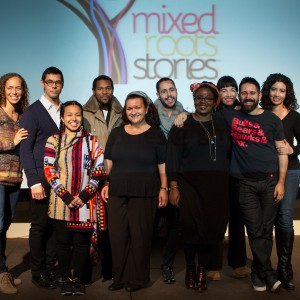 We were honored to have such a talented, global cast, for the LIVE event.
We were honored to have such a talented, global cast, for the LIVE event.
Here are some of the clips from the LIVE event on the closing night of the conference!
Note: Mature Language in several of the pieces.
Part 1 – Joe Hernandez-Kolski (with guest Dustin)
www.pochojoe.com
Part 2– Joe Hernandez-Kolski
www.pochojoe.com
Part 3-Tangled Roots (Katy Massey, Zodwa Nyoni, Lladel Bryant, Adam Lowe)
www.tangledroot.org.uk
Part 5-Tania Cañas
www.tania-canas.squarespace.com
Part 6– Fred Sasaki
Part 7 – Joe Hernandez- Kolski
www.pochojoe.com